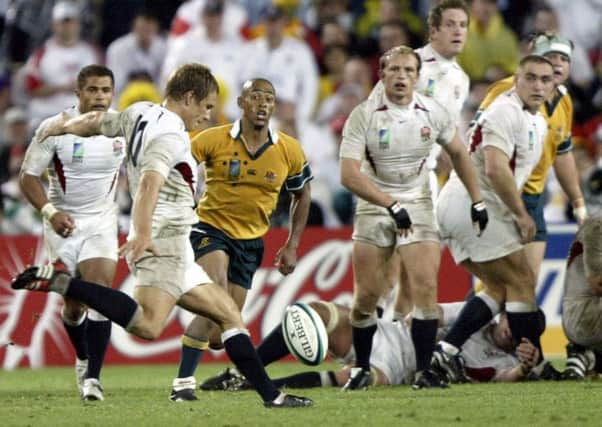Comment: Let's not forget the subtle skills of yesteryear


International careers were shorter before amateurism began to fray, as players had to juggle work commitments, family and rugby; and it was usually the last which lost out. Ken Scotland, for instance, one of the most skilful players I’ve ever watched, was out of the international game well before he was 30. The career of Ireland’s Tony O’Reilly, the most exciting wing of the Fifties, effectively ended in his middle twenties.
Players were smaller and lighter. Tom Reid, the biggest forward on the 1955 Lions tour of South Africa, stood only 6ft 3in. I doubt if Ken Scotland ever weighed much more than 11 stone. In the Sixties players got bigger. Mike Campbell-Lamerton, at 6ft 5 and weighing around 17 stone, wouldn’t have been out of place in a modern pack. Then came Peter Stagg, 6ft 9 or 10. My brother-in-law sometimes played darts with him in a London pub, and reckoned that standing at the oche the lanky Stagg could almost plant his arrows in the board. No doubt some line-out opponents likewise thought his height gave him an unfair advantage .
Advertisement
Hide AdAdvertisement
Hide AdSquad sessions being rare, players developed individual skills on their own. Ken Scotland kicked equally well with either foot. I am puzzled as to why so few professional players can do so. There are exceptions; England wouldn’t have won the World Cup in 2003 if Jonny Wilkinson hadn’t taught himself to drop goals with his right – which is to say, wrong – foot.
Some things have disappeared from the game: the foot-rush, for instance. I don’t recall if I actually heard the Murrayfield crowd roar “Feet, Scotland, Feet”, but even in the late 50s the controlled dribble with four or five forwards, participating and inter-passing as the ball was kept close to the feet, was a feature of the Scottish game, formidable and devilish hard to stop especially in wet conditions.
Dribbling was a skill acquired after hours of practice. As a boy at Glenalmond I remember watching Jim Greenwood, the Scotland captain, dribbling the 220 yards length of the athletics cinder track, the ball kept so close it seemed to be attached to his feet.
It was probably the abolition of the law which required the ball to be played with the foot after a tackle which took dribbling and the foot-rush out of the game. We still sometimes see the hack and chase – what Jim Renwick, who was adept at it, used to call “rubbish rugby” – but rugby has become more of a handling game, and you have, I suppose, to be a pensioner to have a memory of the excitement and art of the foot-rush.
What may seem mere adjustments of a law may have a big effect. Anything but a clean catch used to be a knock-on even if the ball did not touch the ground. Then “re-adjustment” (a fumble) was permitted. The interpretation has since been stretched. You can now reach for the ball with one hand, knock it forward, catch it while it is still in the air, and gallop away to score a try. No doubt this has been an improvement, but I wonder how many of the tries scored today would have been chalked off under the old law: half perhaps?
Laws have been tilted in favour of the attacking team, or rather the team in possession. The law relating to advantage is generously applied. It used to be the case that a mistake – dropping a pass for example – lost you an advantage.
Not so now, or only rarely. Penalty advantage, especially in the opposition 22, persists through numerous phases, and, if the team enjoying the advantage fails to make use of its opportunity, it will be rewarded with the original penalty. Perhaps this is a good thing; nevertheless it often seems unfair.
One other change favours the attack. In the past if the ball was held up over the goal-line or became unplayable close to it, the referee, ordering a 5-metre (yard then) scrum, would say “defenders’ ball”.
Advertisement
Hide AdAdvertisement
Hide AdNow the put-in will go to the attacking side who are thus given another opportunity to do what they have failed to do, while the brave and skilful defenders are in effect told they have to do it all again – and perhaps again and again.
No doubt most of the law changes designed to encourage a more attacking and more open game have been beneficial, but they don’t always seem fair. Defence is, after all, as much a part of the game as attack, and should get its reward.
One law-change made long ago has unquestionably been a good thing: the restriction on kicking into touch on the full from outside the 22. Nobody who endured the 1963 Scotland-Wales game of 111 line-outs would wish to see a return to the old law.